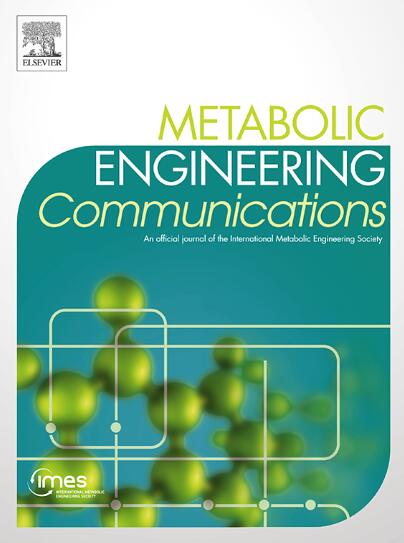Reconstruction and analyses of genome-scale halomonas metabolic network yield a highly efficient PHA production
IF 4.1
Q2 BIOTECHNOLOGY & APPLIED MICROBIOLOGY
引用次数: 0
Abstract
In pursuit of reliable and efficient industrial microbes, this study integrates cutting-edge systems biology tools with Halomonas bluephagenesis TD01, a robust halophilic bacterium. We generated the complete and annotated circular genome sequence for this model organism, constructed and meticulously curated a genome-scale metabolic network, achieving striking 86.32% agreement with Biolog Phenotype Microarray data and visualize the network via an interactive Electron/Thrift server architecture. We then analyzed the genome-scale network using vertex sampling analysis (VSA) and found that productions of biomass, polyhydroxyalkanoates (PHA), citrate, acetate, and pyruvate are mutually competing. Recognizing the dynamic nature of H. bluephagenesis TD01, we further developed and implemented the hyper-cube-shrink-analysis (HCSA) framework to predict effects of nutrient availabilities and metabolic reactions in the model on biomass and PHA accumulation. We then, based on the analysis results, proposed and validate multi-step feeding strategies tailored to different fermentation stages. This integrated approach yielded remarkable results, with fermentation culminating in a cell dry weight of 100.4 g/L and 70% PHA content, surpassing previous benchmarks. Our findings exemplify the powerful potential of system-level tools in the design and optimization of industrial microorganisms, paving the way for more efficient and sustainable bio-based processes.
基因组尺度卤单胞菌代谢网络的重建和分析产生了高效的 PHA 生产
为了追求可靠高效的工业微生物,本研究将前沿的系统生物学工具与蓝光单胞菌(Halomonas bluephagenesis TD01)--一种强健的嗜卤细菌--进行了整合。我们为这种模式生物生成了完整的注释环状基因组序列,构建并精心策划了基因组尺度的代谢网络,与生物表型芯片数据的一致性达到惊人的 86.32%,并通过交互式 Electron/Thrift 服务器架构实现了网络的可视化。然后,我们利用顶点取样分析(VSA)对基因组尺度网络进行了分析,发现生物量、多羟基烷酸(PHA)、柠檬酸盐、乙酸盐和丙酮酸盐的生成是相互竞争的。考虑到 H. bluephagenesis TD01 的动态性质,我们进一步开发并实施了超立方体-水槽分析(HCSA)框架,以预测模型中营养物质利用率和代谢反应对生物量和 PHA 积累的影响。然后,我们根据分析结果,提出并验证了针对不同发酵阶段的多步骤喂养策略。这种综合方法取得了显著的成果,发酵后细胞干重达到 100.4 克/升,PHA 含量达到 70%,超过了以前的基准。我们的研究结果体现了系统级工具在设计和优化工业微生物方面的强大潜力,为更高效、更可持续的生物基工艺铺平了道路。
本文章由计算机程序翻译,如有差异,请以英文原文为准。
求助全文
约1分钟内获得全文
求助全文
来源期刊

Metabolic Engineering Communications
Medicine-Endocrinology, Diabetes and Metabolism
CiteScore
13.30
自引率
1.90%
发文量
22
审稿时长
18 weeks
期刊介绍:
Metabolic Engineering Communications, a companion title to Metabolic Engineering (MBE), is devoted to publishing original research in the areas of metabolic engineering, synthetic biology, computational biology and systems biology for problems related to metabolism and the engineering of metabolism for the production of fuels, chemicals, and pharmaceuticals. The journal will carry articles on the design, construction, and analysis of biological systems ranging from pathway components to biological complexes and genomes (including genomic, analytical and bioinformatics methods) in suitable host cells to allow them to produce novel compounds of industrial and medical interest. Demonstrations of regulatory designs and synthetic circuits that alter the performance of biochemical pathways and cellular processes will also be presented. Metabolic Engineering Communications complements MBE by publishing articles that are either shorter than those published in the full journal, or which describe key elements of larger metabolic engineering efforts.
 求助内容:
求助内容: 应助结果提醒方式:
应助结果提醒方式:


